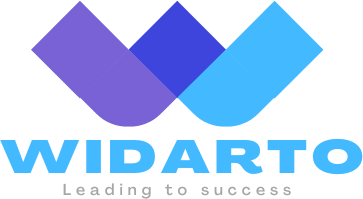Effective leadership is fundamentally intertwined with the ability to communicate. Leaders who excel in their communication skills can clearly convey ideas, inspire their teams, and influence outcomes. This combination is what sets successful leaders apart, as effective communication fosters trust and engagement among team members.
When leaders articulate their vision and goals with clarity, they create an environment where collaboration can thrive. Good communication allows for the exchange of feedback and encourages open dialogue, enabling leaders to adapt their strategies based on input from their team. By prioritising effective communication, leaders not only enhance their influence but also establish a sense of belonging within their organisation.
Additionally, the impact of strong communication extends beyond the conventional leader-follower relationship. It empowers teams to share their insights and contribute meaningfully to shared objectives. Leaders who prioritise this approach cultivate a culture of transparency and mutual respect, ultimately leading to greater organisational success.
Fundamentals of Leadership Communication
Effective leadership communication involves the ability to convey ideas, motivate teams, and foster an environment of trust. Key aspects include understanding communication types and honing specific skills that enhance interactions between leaders and their teams.
Defining Leadership Communication
Leadership communication refers to the way leaders share information and engage with their teams. It encompasses verbal, nonverbal, and written forms, playing a crucial role in shaping the organisational culture. Leaders must clearly articulate their vision, values, and expectations to align their team towards common goals.
Essential to this process is the ability to actively listen. Active listening allows a leader to comprehend concerns, feedback, and suggestions from team members, validating their input and fostering inclusivity. Ultimately, effective communication paves the way for strong relationships and enhances overall team performance.
Components of Effective Communication
Three critical components form the backbone of effective leadership communication: clarity, coherence, and connection. Clarity ensures that the message is understood without ambiguity. Leaders should use straightforward language and avoid jargon that may confuse their audience.
Coherence relates to presenting ideas in a logical and structured manner. This establishes a clear narrative that team members can follow easily. Connection involves creating rapport through empathy, understanding, and personal engagement. Leaders who connect emotionally with their team promote trust, enhancing cooperation and collaboration.
Communication Skills for Leaders
Key communication skills required for effective leadership include verbal communication, nonverbal communication, and written communication. Verbal communication entails articulating ideas clearly and confidently, while nonverbal communication incorporates body language, gestures, and facial expressions, which can either reinforce or contradict spoken words.
Written communication is equally important, necessitating precision and clarity in emails, reports, and presentations. Additionally, asking open-ended questions encourages dialogue and participation, allowing team members to share their insights. Incorporating active listening practices further strengthens these skills, ensuring leaders remain receptive and responsive to their team’s needs.
Enhancing Leadership Through Communication
Effective communication significantly improves leadership by fostering trust and rapport, promoting empathy and constructive feedback, and motivating and influencing teams. These elements are crucial for developing a cohesive and high-performing environment.
Building Trust and Rapport
Building trust requires consistent, open communication. Leaders should demonstrate reliability through their actions and words. This trust-building process involves being transparent about decisions and outcomes.
Leaders can establish rapport by engaging with team members personally. Understanding individual strengths and weaknesses allows leaders to tailor their approach, making employees feel valued and respected.
Regular one-on-one meetings can strengthen these connections. In these discussions, leaders can share their vision and encourage feedback, reinforcing a mutual sense of respect and commitment.
Empathy and Constructive Feedback
Empathy is essential in understanding team dynamics. Leaders who actively listen to their employees foster a supportive atmosphere. This openness encourages team members to express their concerns and ideas without fear of criticism.
Constructive feedback should be specific and actionable. It aids in professional development and helps employees improve their performance. Leaders should balance positive reinforcement with developmental feedback to empower their team.
Incorporating active listening techniques enhances the effectiveness of feedback. By acknowledging feelings and perspectives, leaders create an environment where employees feel supported and motivated to grow.
Motivation and Influence
Motivating team members often hinges on effective communication. Leaders who clearly articulate goals and expectations can inspire their teams to achieve more.
Utilising various leadership styles can enhance motivation. For instance, a transformational style emphasises collaboration and shared vision, while a transactional style focuses on clear, structured tasks.
Influence comes from encouragement and recognition of achievements. Regularly acknowledging contributions fosters a motivated workforce. Leaders can use various methods, such as public recognition or personal notes, to reinforce positive behaviours and outcomes.
By mastering these communication strategies, leaders can enhance their influence and drive team performance.
Strategic Communication for Organisational Goals
Effective communication is crucial for aligning organisational goals with team efforts. By employing targeted communication strategies, leaders enhance productivity, foster employee engagement, and promote collaboration.
Linking Communication to Organisational Objectives
Clear communication connects individual roles to broader organisational objectives. It ensures that every team member understands how their contributions affect overall goals.
Key aspects include:
- Goal clarity: Leaders should articulate objectives effectively to create a shared vision.
- Feedback mechanisms: Encouraging input helps align tasks with organisational priorities.
- Performance metrics: Regular updates on progress keep employees informed and motivated.
By linking day-to-day tasks to larger goals, leaders can foster a sense of purpose among employees, enhancing commitment and performance.
Communication Strategies for Leadership
Leaders should utilise various communication strategies to facilitate effective information flow. This can include regular meetings, digital platforms, and informal check-ins.
Examples of effective strategies:
- Inclusive dialogue: Actively involving team members in discussions enhances engagement and builds trust.
- Transparent communication: Sharing successes and challenges creates an open culture and promotes accountability.
- Tailored messaging: Adapting communication styles to suit different audiences fosters understanding and collaboration.
These strategies not only improve team dynamics but also empower employees to contribute ideas that align with organisational goals.
Leadership Adaptability and Problem-Solving
Adaptability in communication is essential for effective leadership. Leaders must adjust their strategies based on situational needs and team responses.
Key traits include:
- Active listening: Leaders should pay close attention to team feedback for better problem-solving.
- Flexibility in approach: Adapting communication methods fosters improved teamwork and collaboration.
- Crisis management: During challenges, clear and calm communication can guide teams through uncertainty.
By embracing adaptability, leaders enhance their ability to navigate obstacles and keep the team focused on achieving organisational objectives.
Challenges and Development in Leadership Communication
Effective leadership communication encounters various challenges that can impede a leader’s ability to convey their vision. Addressing these obstacles demands a focus on self-assessment and ongoing professional development.
Overcoming Communication Barriers
Leaders frequently face communication barriers that can stem from poor communication skills, cultural differences, or varying expectations among team members. Misunderstandings may lead to absenteeism, decreased productivity, and lower job satisfaction. To combat these issues, leaders should actively seek feedback, practise active listening, and adapt their communication methods to suit their audience. Tailoring messages can enhance clarity and ensure that the intended information is effectively conveyed. Building strong relationships within teams can also break down barriers and foster an environment of open communication.
The Importance of Self-Assessment
Self-assessment plays a crucial role in developing communication skills. Great leaders routinely reflect on their interactions to identify strengths and areas for improvement. By evaluating their communication styles and methods, they can better understand their impact on team dynamics. Tools such as 360-degree feedback can provide valuable insights into how others perceive their communication. This process encourages leaders to be more aware of their verbal and non-verbal cues. When leaders make necessary adjustments based on self-assessment, they enhance their ability to inspire and empower their teams.
Continuous Professional Development
Ongoing professional development is vital for leaders aiming to improve their communication skills. Engaging in workshops, seminars, or mentorship programmes can provide new strategies for effective writing and presenting. Transformational leaders often prioritise these opportunities to gain fresh perspectives and tools to enhance their communication. Networking with other business leaders also allows for the sharing of best practices in leadership communication. Emphasising personal and professional growth fosters a culture of continuous improvement, ultimately benefiting both the leaders and their teams.


